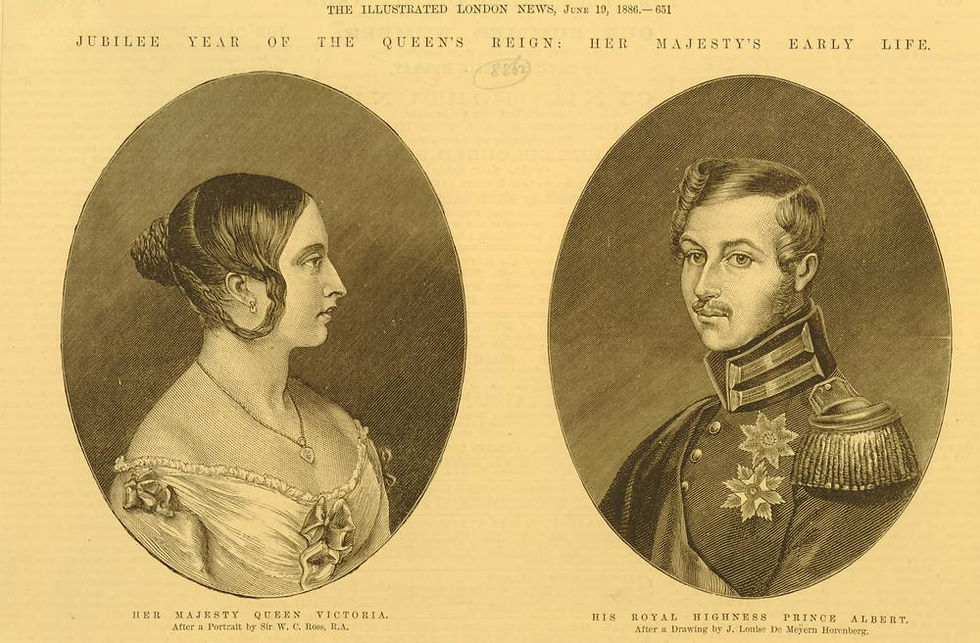The life of Princess Louise, Duchess of Fife
- Victoria Regina
- Feb 20, 2024
- 3 min read
Born at Marlborough house on 20th of February 1867, Princess Louise entered the world surrounded by fear over her mother’s life. Princess Alexandra, daughter of King Christian IX of Denmark, had fallen ill with rheumatic fever towards the end of her pregnancy. Her pain and symptoms were so severe that she was at high risk of passing away, even after the birth of her daughter. Thankfully she soon made a full recovery, besides developing a permanent limp. Three months after the traumatic event, on 10th May, the baby was baptised at Marlborough House. Despite Queen Victoria demanding she be named after her, Alexandra and her husband, the Prince of Wales, decided to name the baby after her paternal aunt, Princess Louise, who is believed to have not long given up her own illegitimate son. However, this is mostly down to speculation. While her first name had been controversial, the baby was given the middle names Victoria Alexandra Dagmar after her paternal grandmother, her mother, and her maternal aunt. Louise’s Godparents included three of her father’s sisters: Princess Alice, Princess, Helena, and Princess Louise. Her other godparents were: Prince Friedrich of Prussia; Grand Duchess Augusta of Mecklenburg-Strelitz; Friedrich Wilhelm of Hesse-Kassel; Queen Louise of Denmark; King George I of Greece; Tsarina Maria Feodorovna of Russia; Prince Edward of Saxe-Weimar-Eisenqch; and Charles of Schleswig-Holstein-Sonderburg-Glücksburg.

Growing up at Sandringham House in Norfolk, Princess Louise maintained a close relationship with her parents and four surviving siblings. ‘Toots’, as she was known by her family, and her two sisters received a minimal home education that mainly focused on music and art. Together, the three sisters were known for their shy and reserved personalities, which caused them to dislike being the centre of attention. Their confidence wasn’t helped by their overbearing mother, who insisted on keeping her daughters as children as long as she could. For example, Princess Louise had a children’s party to celebrate her 19th birthday!

Alexandra was also also possessive over her daughters and saw no reason for them to marry, instead wanting them to remain as her permanent companions. Luckily for Louise she was able to escape her mother’s grip on 27th July 1889, when she married her third cousin Alexander Duff, 6th Earl of Fife, in the Private Chapel at Buckingham Palace. Following in the footsteps of her namesake, Princess Louise became the second member Queen Victorias family to marry a ‘commoner’. Two days after the ceremony, Queen Victoria upgraded Alexander from Earl to Duke of Fife, along with Marquess of macduff.

Despite the 18 year age gap, the couple lived happily at Mar Lodge, a specially built sporting lodge in Aberdeenshire, Scotland. On 16th June 1890, Louise gave birth to stillborn son called Alistair. A year later Louise gave birth to their second child, Alexandra, and two years later, on 3rd of April 1893, their final child, Maud. By 1900 it had become clear that the couple wouldn’t be produce a son, leaving them no descendants to inherit the Dukedom. So, on 24th April 1900, Queen Victoria signed letters patent creating a second Dukedom of Fife and Earldom of Macduff in the peerage of the United Kingdom. The new Dukedom was almost identical to the original, however it included a special clause that meant the title would pass onto the Dukes eldest daughter before being passed down to their male descendants. A year later, Queen Victoria sadly passed away and Louise’s father succeeded her as King Edward VII. On 9th November 1905, Louise was bestowed the title of Princess Royal, a title that is given to the eldest daughter of the sovereign. Along with this, her two daughters were also created Princesses.

In December 1911, Louise, Alexander and their daughters were travelling to Egypt when their boat, SS Delhi, was hit by a storm and ran aground just off the coast of Morocco. The family managed to escape into a lifeboat, which is thought to have also sank. The family managed to survive to sea and embarked on a long walk in the rain to cape spartel lighthouse. By the time they made it to Egypt, Alexander had fallen ill with pleurisy and died in Aswan on 29th January 1912. Louise was naturally devastated by his passing and began living a reclusive lifestyle. On a few occasions she accompanied her mother and sister Victoria on public outings.

In October 1929, Louise suffered a gastric haemorrhage while staying at Mar Lodge. She was moved down to London to recover at her home in Portman Square. It was here that she died in her sleep on 4th January 1931, with her daughters by her side. She was aged 63. Her body was initially placed in the Royal Vault at St George’s Chapel in Windsor before being moved to her Private Chapel at Mar Lodge.



Comments